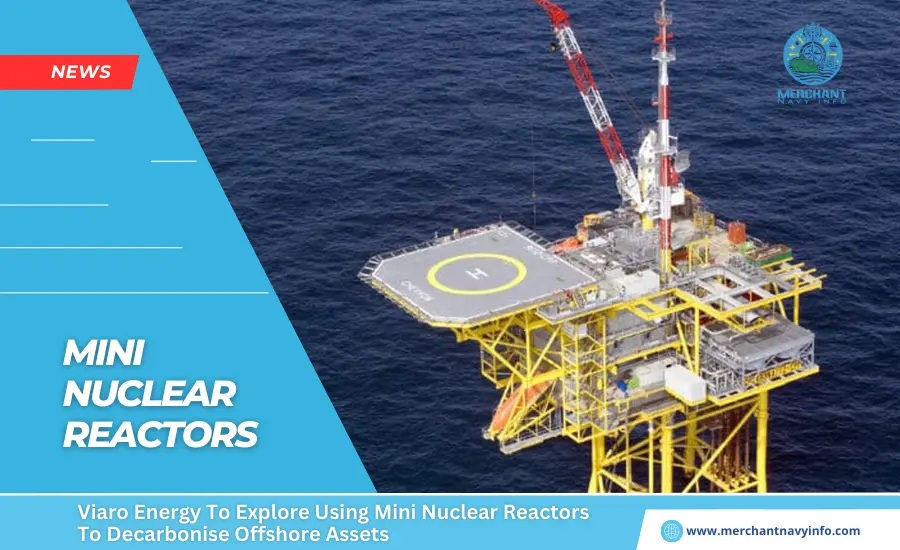
Viaro announced a Memorandum of Understanding (MoU) establishing a strategic partnership and feasibility study framework with nuclear energy startup Newcleo. Under this plan, Viaro will deploy his Newcleo Advanced Modular Reactor (AMR) at onshore sites. And also connect it to the company’s existing and future offshore assets. Vialo currently holds non-commercial interests in approximately 30 offshore assets. In British and also Dutch territories in the North Sea, including the Anning and alsoSomerville fields. Vialo also announced that it had invested in Nucleo and acquired shares through a recent capital increase but did not disclose the amount. Newcleo Reactor Technology was launched in 2021 by Italian physicist Stefano Buono. His newcleo is developing proprietary lead-cooled fast reactor (LFR) technology.
LFR Technology
LFR technology is designed to operate on spent nuclear fuel reprocessed from existing nuclear reactors. Nucleo says this will not only reduce the climate impact of its operations. But will also “effectively end the fuel cycle” by increasing the usable energy produced from previously mined uranium. The company said this would eliminate the need to extract. And also process new uranium resources, reducing the amount of nuclear waste. LFR technology is part of a series of new reactor types known as Generation IV reactors. Newcleo said its mini-reactors are suitable for a variety of locations due to their “unique intrinsic safety and compact characteristics.”
As a result, nuclear reactors can be co-located with power-intensive industries such as offshore oil and gas operations, Nucleo said. The London-based company aims to raise €1bn (£860m) in funding this year, making it one of Europe’s most well-funded startups. Nucleo is currently targeting a 2030 launch date for the first nuclear-powered prototype of its technology. Viaro and Newcleo Joint Venture Following the completion of the feasibility study. The two companies will establish a joint venture to deploy Newcleo’s 200 MWe LFR reactor at selected sites in Viaro’s portfolio. Vialo said this includes both existing assets in the North Sea and potential acquisitions the company is currently pursuing. Viaro said the technology can help the industry meet its net-zero goals. And maximize the benefits of AMR in combined heat and power, combined heat and power, and off-grid applications.
LFR Life Span
Vialo says that with an average lifespan of 60 years, each LFR reactor will continue to provide clean energy to the UK grid even after hydrocarbon assets are decarbonized. Vialo Energy CEO Francesco Mazzagatti says the company is proud to be “leading the decarbonization effort” in the oil and gas sector through the use of nuclear technology.”Our partnership with Nucleo is an important milestone in our strategy to demonstrate the only commercially viable approach to the energy transition by investing in both energy security and long-term net zero goals.
Yes,” he said. “Stefano Buono and his team are true visionaries with decades of experience in the field of nuclear energy and are committed to ensuring Newcleo is sustainable, as already evidenced by the numerous partnerships with leading companies. We believe that we have the potential to pave the way for affordable clean energy solutions in the pioneers and pioneers” of each core industry segment. “Due to my belief in the concept and the team behind it, Vialo and I personally purchased shares in Nucleo. Viaro and Newcleo partnership ‘exciting’ Stefano Buono. Chairman and CEO of Newcleo, said the ‘exciting partnership’ demonstrates the potential of LFR technology to support industrial decarbonization.
The Transition
The transition to overall net zero will only be achieved by decarbonizing not only the energy, transport, and heating sectors . But also energy-intensive and “hard to contain” heavy industry. “Our technology means that for the first time nuclear reactors will deliver decentralized. Low-carbon baseload energy to customers, enhancing the safety and security of supply.” Decarbonizing oil and gas assets In 2021, North Sea oil and gas operators have really committed to halving emissions by 2030. And thereaching net-zero emissions by 2050. This commitment was made as part of a series of measures agreed with the UK Government under the North Sea Transition Agreement. Many operators are considering electrifying their offshore facilities to achieve emissions reductions, particularly from offshore wind energy. However, there are concerns that electrification goals will not be met, and industry analysts are proposing alternative solutions such as carbon capture, utilization, and storage.
Vialo Energy
Vialo Energy is so far the only North Sea operator to say it is considering nuclear reactors. But the technology has been touted by the International Atomic Energy Agency (IAEA) as a potential solution. Most oil and gas operations burn fossil fuels to generate the energy needed. For upstream and downstream operations,” said Aline de Cloiseau, Head of the IAEA’s Nuclear Energy Division. “To reduce carbon emissions from these processes, drilling, natural gas liquefaction, and refining. Should ideally be powered by low-carbon power sources, such as nuclear power.” Drilling and Refining “We need nuclear power” Advocating for nuclear power as a possible solution For the oil and gas sector, Terra Praxis, a non-profit organization focused on decarbonization solutions for hard-to-decarbonize industrial sectors. Chirayu Batra, chief technology officer at Terra Praxis, said companies with refining processes and drilling operations “need nuclear power.” “
These are very carbon-intensive processes, and in 30% of cases the electrical grid cannot reach the area where the extraction or refining is taking place,” Batra said. “Burning diesel and gas to generate the energy required for these operations represents a loss of business for the industry and an increase in CO2 emissions. There are ways to electrify these processes from carbon-free power sources. MRs (microreactors) can be used almost anywhere, even offshore, if installed on ships or floating platforms.” Wind and solar light, etc.









